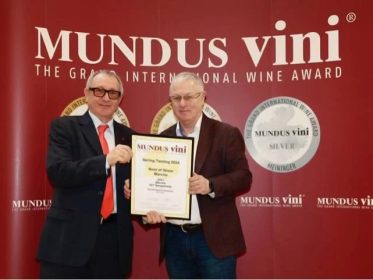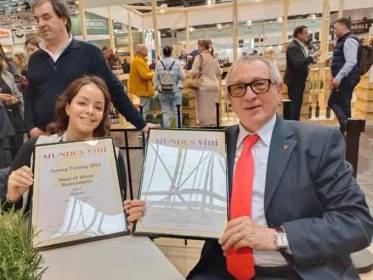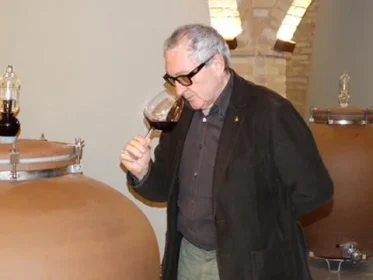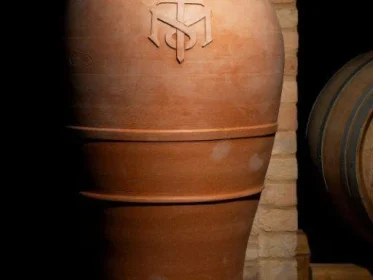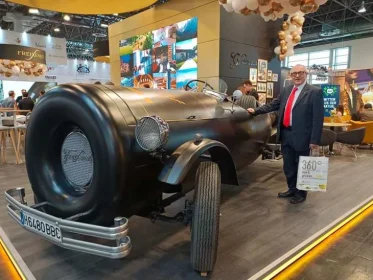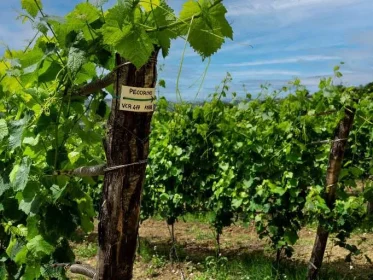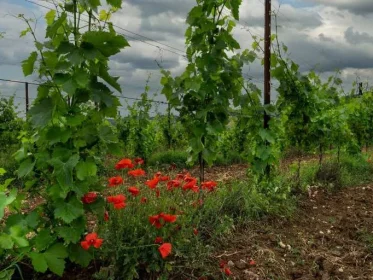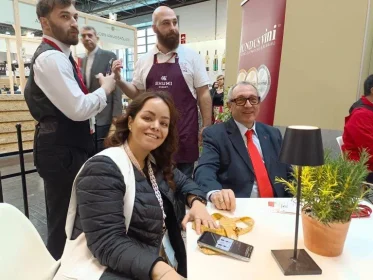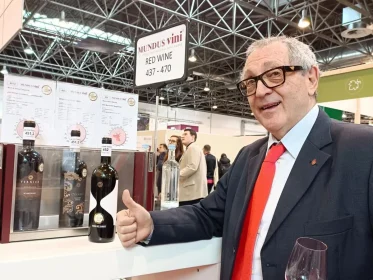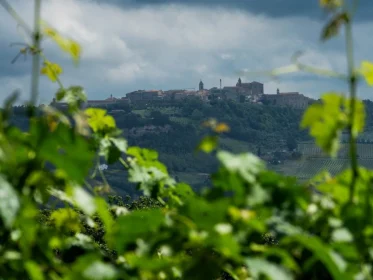Luigi Costantini On the Grande Vino of Tenuta Manoylo
Text: Julia Shafranska
One of the most authoritative winemakers in Italy, the President of Assoenology Marche, Luigi Costantini, found the opportunity in his busy schedule to answer the questions of the director of Drinks+ International Communication Media Group. Luigi Costantini was born in the Marche region and has been working exclusively with local wines for 45 years. By joining forces with the owners of Tenuta Manoylo and the unique data of the terroir, Luigi Costantini managed to create a pool of brilliant wines at this winery. And from the first steps on the international stage, these wines won the highest awards of the prestigious international competition. How success was achieved, what direction the winemakers of Marche are moving in — we asked about all this in this interview.
D+: We know that your whole life is dedicated to the development of winemaking in Marche, the revival of local grape varieties and the international recognition of wines from this historical region. Five years ago, in particular, you, as an enologist, began collaborating with Tenuta Manoylo on the idea of producing “grande vino rosso”. We ask you to explain what meaning you put into this phrase. What should such wines be like?
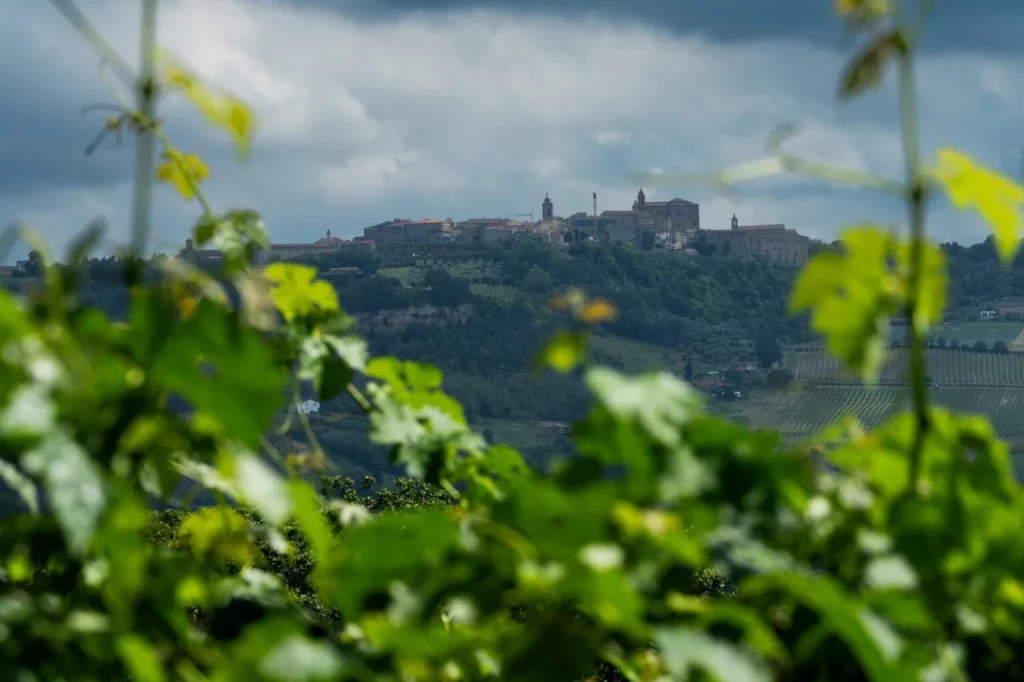
Luigi Costantini: The meaning is quite simple and expresses the idea of the project to obtain red wines with specific characteristics that are the optimal expression of a particular grape variety and climatic environment, with differences, even minimal, related to the climatic trend. These red wines should have niche characteristics to satisfy clients who are able to appreciate and understand the nuances highlighted by the terroir, with differences related to the vintage, but with the same common theme. Therefore, these are long-lived, complex, elegant, deep and powerful red wines that evoke sharp emotions in the taster.
D+: This year we are already seeing the fruits of this collaboration. In 2024, Tenuta Manoylo received the highest awards from the Mundus Vini competition: Grand Gold — 2021 Marche IGT Sangiovese; Silver — 2021 Falerio DOC Pecorino and Best of Show Marche for the excellent wine 2021 Marche IGT Sangiovese. Can you comment on the specific outstanding characteristics and features of each wine, noted by the esteemed judging panel?
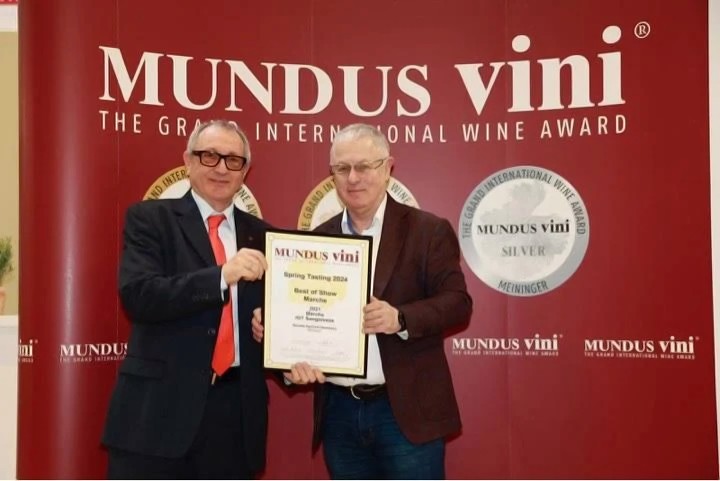
Luigi Costantini: Indeed, this year we are finally beginning to see the results of the work started in 2020: all this became possible thanks to the owners of the winery, who believed in us — I say “in us”, because I work with colleagues: Lucciarini Vincenzo, who heads the analytical laboratory, and Lucciarini Matteo. I will try to briefly describe each of these wines.
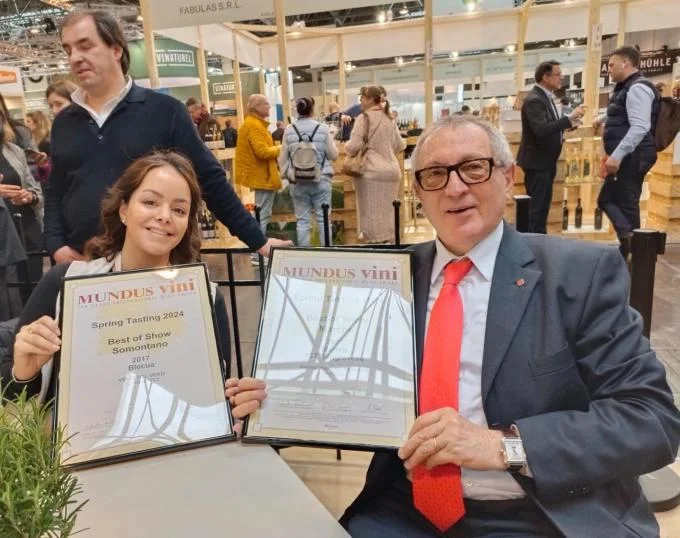
Marche IGT Sangiovese 2021 — is the embodiment of the history of Sangiovese, one of the most important Italian grape varieties, which has an ancient origin and has been known since Etruscan times. The first documented reports date back to 1500 and refer to the central Apennines, the region between Umbria, Marche, Romagna and Tuscany. Sangiovese is able to best convey the features of climatic microzones. If we describe the appearance of this wine, then I note the ruby-red color with weak purple reflections. The aroma is intense, complex, refined, enveloping and ethereal, with notes of underbrush, with hints of ripe red fruits, plums, raspberries and cherries, with spicy and balsamic tones. These features complement each other and give the wine balance, elegance and harmony. There is a noticeable presence of tertiary aromas, such as toasted, vanilla or spicy notes. Light balsamic notes complete the complex aromatic picture. Taste: dry, sharp, warm and fruity, gives elegance to the wine and demonstrates evolution. Thanks to elegant and balanced tannins and low sugar content, it acquires a piquant and persistent taste with balsamic final notes and a spicy tertiary aroma.
Falerio DOC Pecorino 2021
The local vine of this ancient variety was rediscovered in the Arcquatano del Piceno area by Guido Cocci Grifoni in the 80s. The 90s were marked by the revival of Pecorino, an excellent wine with a striking appearance and powerful acidity, but only in the 2000s, after experiments in the field and on the vineyard, DOC was created. And since 2011, it can be produced on the territories of Moresco, Falerio DOC Pecorino. Pecorino today is a symbolic wine and ambassador of the Piceni Fermani region: it is defined as “red in white clothes”. It has a beautiful straw-yellow color, tending towards golden, with soft greenish reflections. The aroma is deep, a complex bouquet, with an elegant structure with intense notes of white flowers and ripe fruits and with light notes of vanilla and balsam. Pecorino demonstrates a good range with very noticeable and clear aromas, with a predominance of herbal and sage tones. This wine has a wonderful structure, good acidity, full, piquant and pleasantly mineral, with a persistent taste.
Marche IGT Passerina 2021
The “Passerina” wine is one of the most famous wines of Marche and Abruzzo, produced from grapes of the same vine. The reason why this wine is called “Passerina” is that sparrows particularly like to peck at the grapes on the vine, from which the name of the wine comes. This vine was highly valued by winemakers and was called by such synonyms as Cacciadebiti, Scacciabebito, Pagadebito and Uva d’Oro, clearly indicating the variety’s ability to guarantee a good harvest every year and reliable profitability. Passerina has a nice straw-yellow color with golden reflections. The intense aroma of medium complexity has strong floral notes of lime and hawthorn, with broad fruity notes, mainly pear; cedar and ripe grapefruit notes and elegant mineral hints complete the aromatic trail. The proximity of the vineyards to the sea adds a characteristic taste — fresh, pleasant and soft, with a good structure. It is clear and persistent, with light citrus and aromatic herb notes.
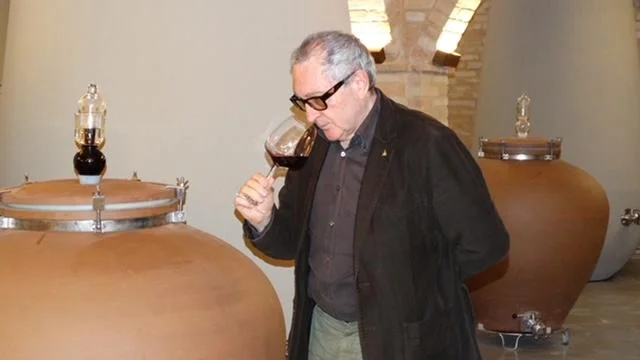
D+: We and, of course, our readers would like to learn more about the unique wine Peconero, a white wine with red properties, created by macerating Pecorino grapes on the skin of Petit Verdot using amphorae made of local volcanic clay. Please comment on this idea — how do these two varieties work together, how does the wine material develop in the amphora? What characteristics does such wine acquire?
Luigi Costantini: The project to create Peconero was born from the fact — already mentioned by me — that Pecorino has always been defined as “red in white clothing”. Varieties: Pecorino no less than 90%, Petit Verdot up to 10%. The yield is ensured by agronomy and is about 70 quintals per hectare. The harvest, which begins in early September for both vines, when the grapes reach the optimal and necessary level of ripeness, is carried out manually in boxes. The cleaned and slightly pressed grapes are macerated and fermented at 15-20 °C in steel tanks with flooding to promote the extraction of the anthocyanin component from the red skin and the aromatic component from Pecorino; maceration is stopped as soon as the optimal color is achieved. After the end of fermentation, the wine remains on the fine lees for at least 20 days. Here I note that malolactic fermentation should not be carried out in order not to lose the typical freshness of Pecorino. Then the wine moves on to the aging phase in wooden barrels and amphorae for 2-4 months. After bottling, Peconero does not require further processing. Pecorino matures early; gives wine with a wonderful structure, with very noticeable and clear aromas, with a predominance of herbal notes, sage. The wine has a wonderful structure, good acidity, full, piquant and pleasantly mineral, with a persistent taste. Petit Verdot, on the other hand, matures late, but we harvest it early to have a ruby-red color, fresh and slightly sour, with fruit and floral aromas that make it similar to Pecorino. These two grape varieties complement each other, and we still have a ruby-red color with complexity in the nose, waiting to be opened. This wine is very balanced in taste, even if Pecorino has a slight advantage. It must be consumed fresh. This is, so to speak, a “summer, fish red”.
D+: By the way, about amphorae — is this traditional vessel for aging wines in your region?
Luigi Costantini: Amphorae are very ancient vessels, dating back to 6000 BC, used primarily by the Greeks and Romans for transporting wine and other agricultural products. It is no coincidence that the history of amphorae, produced in the Adriatic region, from Pedaso to the hilly area, begins with the Greeks, continues with the inhabitants of Piceni and the Romans, as evidenced by some archaeological finds, around the mouth and along the banks of the river Aso, Roman ruins, which testify to the production of amphorae for transporting wine. According to these artifacts, our amphorae are made of volcanic clay in the area of Monteleone Fermano, a few kilometers from Moresco. That is why they are unique and have a volume from 100 to 500 liters. In fact, this is a unique material — since the clay is porous, the amphorae allow moderately oxygenating the crushed grapes or must, and later the wine itself, which gives the aromatic and organoleptic components of the wine noticeable typicity and territorial characteristics.
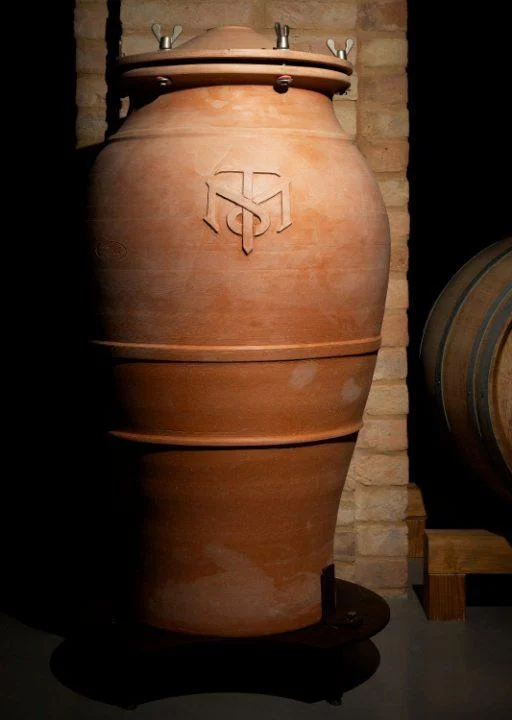
D+: As we know, you are a professor of viticulture and winemaking, and such deep and comprehensive education allows you to conduct very productive experiments both with grape varieties and with different vessels for fermentation and aging of wines: steel tanks and oak barrels, concrete eggs and clay amphorae, in order to create wines with the best reflection of the terroir of Marche. Our readers are mostly professionals, so could you please dwell on this topic and tell us how exactly the vessels affect the organoleptic properties of wine? Perhaps on the example of the above-mentioned award-winning wines?
Luigi Costantini: I would like to note that our company is very sensitive to environmental issues, with rational management from the vineyard to the cellar. We have succeeded in obtaining the EQUALITAS certification, which is a standard that defines the requirements according to the three pillars of environmental and socio-economic sustainability in the wine supply chain. We also use biotechnology in the cellar for aging, maximally avoiding the use of chemicals. In the company, we use different types of containers: stainless steel tanks, concrete tanks, oak barrels, tonneaux, barriques and amphorae. Obviously, the use of these different containers depends on the final goal — the product you want to obtain. Our grapes, washed and dried, are vinified separately, except for DOC ROSSO PICENO, using stainless steel tanks, the Ganimede vinificator and roto vinificator; all the vessels are equipped with temperature control devices. We also use wooden vats. Maceration and fermentation vary in time, depending on the type of grape and the product you want to obtain, and since there are many variables — from harvesting to the end of fermentation, it is necessary to know how to understand and plan all the stages of winemaking. Red wines, which are always kept separate, after a certain period of time on the fine lees are moved to cement or wooden vessels and/or amphorae, always and in any case depending on the product itself and the desired result. The duration of stay varies from a minimum of 2 months to 12-14 months. Careful and periodic analytical and organoleptic checks allow us to determine the optimal time for any planned blending and bottling. In fact, the final organoleptic properties are not always the same, they depend on all the variables, starting from the harvest to maturation and aging.
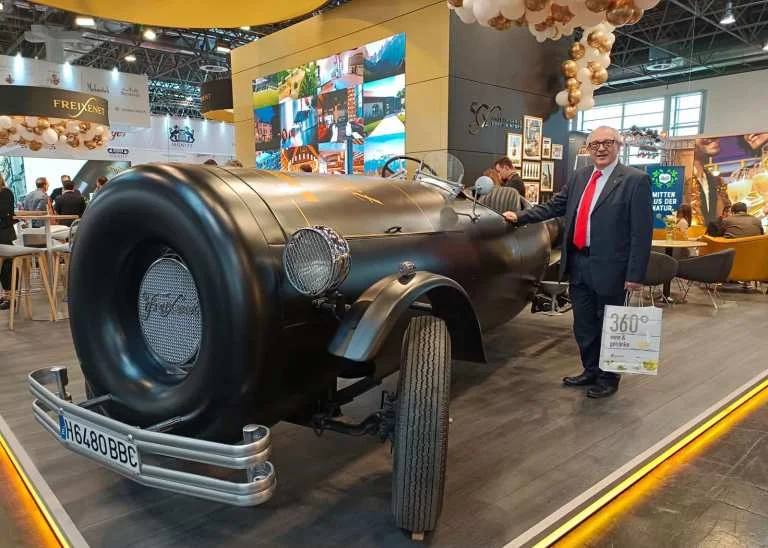
D+: So, you not only revive and apply in practice the old traditional winemaking technologies involving the grape varieties of the Marche region, but you also, as we see, experiment with international grape varieties and innovative winemaking methods. Can you share your plans – what is happening today behind the scenes of Tenuta Manoylo, which innovative wines should we expect in the near future from this potential winery?
Luigi Costantini: Undoubtedly, the varieties of our grapes are traditional for our territory: Sangiovese, Montepulciano and Alicante, as well as international grape varieties for red wines, exclusively local for whites Pecorino and Passerina. It is true that we implement modern winemaking technologies in practice, such as the use of the Ganimede vinificator or rotary vinificator, but we also rediscover old winemaking technologies, first of all vinification under water and of whole grapes. The results of these winemaking methods can be predicted, but to draw final conclusions, we need to wait a few months. At the same time, we began research and selection of wild yeasts: this work will be quite long, but we hope to obtain proprietary yeasts that will further characterize our product. For the next few years, we have several projects for red wine, and we have already talked about Peconero. Another project that we have been conducting since 2023 is dedicated to Alicante. This grape variety has been present on our territory since 1800, we will vinify the grapes according to an ancient technology, which I do not want to reveal yet. In addition, we are already working on a wine in an international style using traditional grapes from our territory, Montepulciano. Both of the last projects will be implemented, I assume, in 2025.
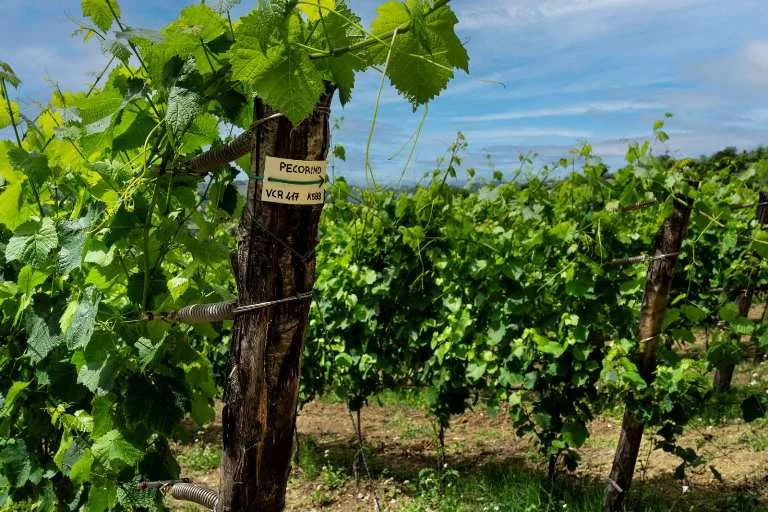
D+: You started your professional career in the same region of Marche, in Ascoli Piceno. And you remain faithful to this region. But Marche, unfortunately, is not such a widely known region in the wine world, as a whole list of other Italian winemaking territories. But you prove with your work — and the success of Tenuta Manoylo is the best fresh confirmation of this! — that the wines of Marche deserve more attention from wine lovers and professionals. Tell us about its features. And why did it happen that at some point it undeservedly found itself on the sidelines of fame?
Luigi Costantini: I entered this profession back in 1973, as soon as I received a diploma in “Winemaking and Viticulture” from the Ulpiani Institute in Ascoli Piceno. I have always worked exclusively in this region until 2005. But since then I started working abroad, mainly in Albania. Unfortunately, it is true that the Marche region is not very well known, although its winemaking potential is high. It is undeniable that the average wine production does not exceed one million hectoliters, as can be seen in 2022, when this figure was 93,000 hl. However, the wine palette is diverse and interesting, in fact we have 5 DOCG (Conero 10,000, Castelli di Jesi Verdicchio Riserva 8,700, Offida 35,200, Verdicchio di Matelica Riserva 2,100, Vernaccia di Serrapetrona 900), IGT Marche and 15 DOC: Bianchello al Metauro 11,700, Colli Maceratesi 8,000, Colli Pesaresi 7,200, Esino 1,400, Falerio 33,000, Lacrima di Morro d’Alba 13,800, Terre di Offida 1,200, Rosso Conero 8,700, Rosso Piceno 72,000, Verdicchio dei Castelli di Jesi 148,000, Verdicchio di Matelica 26,800, Serrapetrona 1,000, I Terreni di Sanseverino 97, Pergola 460, San Ginesio 370, La I.G.T. Marche 268,600. Undoubtedly, the flagship product of our territory is Verdicchio for whites and Rosso Piceno for reds.
D+: How much importance do you attach to terroir in general and what potential do the vineyards of Tenuta Manoylo have? After all, not for nothing did a specialist of your level take up this project!
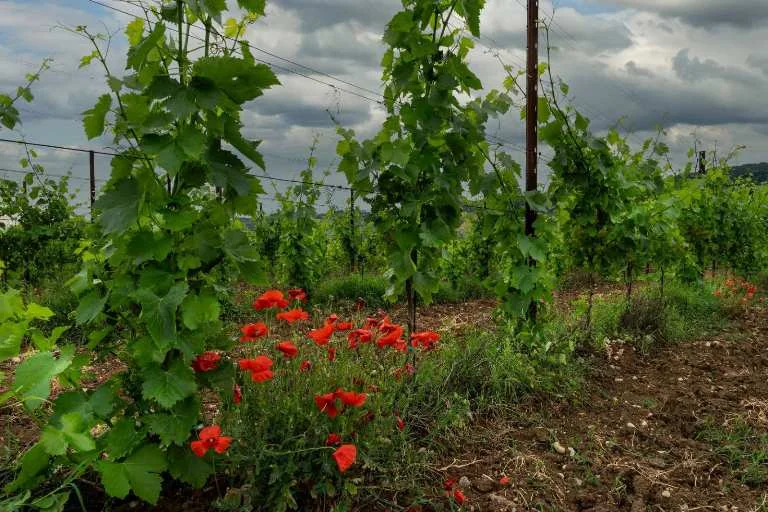
Luigi Costantini: I would like to note that in managing the vineyard I work with my colleague Giuseppe Camilli, one of the most knowledgeable agronomists in Marche. As for the terroir, it is a very important concept, really basic. The company’s vineyard is diverse, it consists of different plots, distant from each other. This diversity means that there is an opportunity to obtain wine from one and the same grape, but which will express the differences of the terroir: in each glass you will feel different soils, etc. Now we are testing different varieties to optimize stylistics, product quality. To better understand the vineyard of the estate, I will give a table.
| Grape variety | Area (m2) | Year of planting |
| Alicante | 33925 | 22 |
| Cabernet Sauv. | 33514 | 20-21-22 |
| Merlot | 18430 | 20 |
| Montepulciano | 60238 | 21-22-23 |
| Sangiovese | 6831 | 18-20 |
| Syrah | 25161 | 18-20 |
| Petit verdot | 26921 | 20 |
| Passerina | 16267 | 20 |
| Pecorino | 14314 | 22 |
Total: 23,5646 hectares
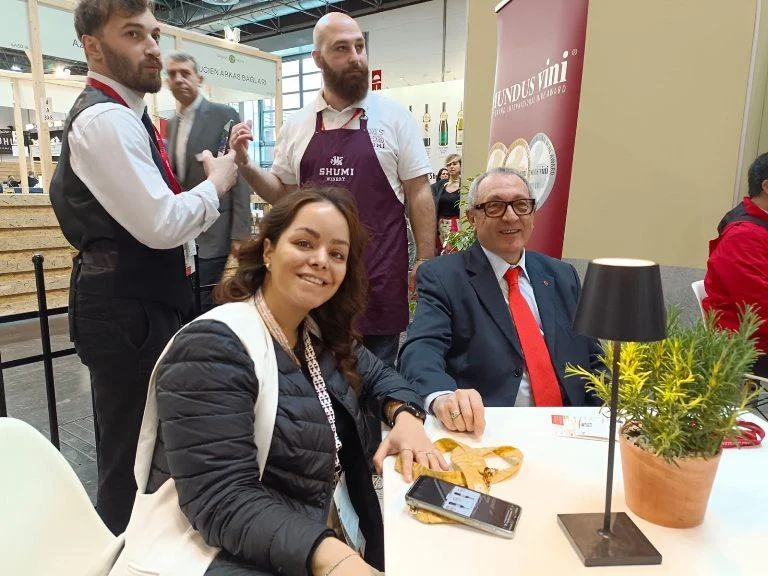
D+: From the height of your positions — ex-president of Assoenologi regione Marche and current president of Harvest Group Centro Ricerche Enologiche – you probably have a good view of what winemakers in Marche should do today to win the battle for recognition of their wines in the world, which today has been launched by such wineries as Tenuta Manoylo. What role can Harvest Group play in this? Can you briefly outline the roadmap: in what style to move, with which grape varieties, how to promote, etc.?
Luigi Costantini: A complex question… Undoubtedly, the wine sector of the region needs to create its own system, abandon limitations, focus on specific projects to create the opportunity to develop a synergistic strategy between all components of the supply chain and the territory. In order to finally overcome critical problems and improve the situation on the market. One of the main problems that determine the weakness of the regional wine and agri-food sector is the extraordinary fragmentation of the production and, above all, commercial system. In the provinces of Ascoli and Fermo, the agri-food sector, in particular the wine sector, has invested more than 130 million euros in improving the quality of production over the past 10 years, distributing the budget between modernization of processing structures, renewal of vineyards, diversification of agricultural activity, etc. But there is still no adaptation of these efforts to advertising and commercial policy, which remains the weak link in our production system.
D+: Dear Mr. Luigi! Thank you very much for your time answering our questions, success to you and your wines and well-deserved fame — to the Marche region!
